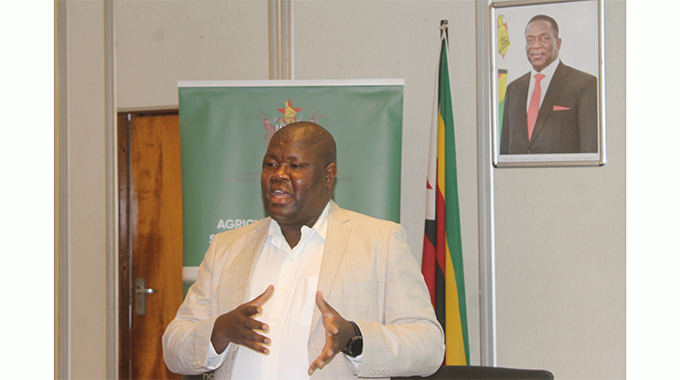Billion-dollar horticulture industry attainable

Elton Manguwo
THE nation’s dream of attaining a US$1 billion horticulture industry by 2025 is fast coming within range, with the area committed to horticultural production increasing by 4,6 percent from 113 000ha in 2021 to 119 000ha in 2022, all thanks to the Government’s various intervention measures to boost productivity.
In a statement recently, Lands, Agriculture, Fisheries, Water and Rural Development permanent secretary Dr John Basera said the horticulture sector was growing given the commitment by Government and the subsequent successful launch and implementation of the US$30 million Horticulture Export Revolving Fund (HERF).
“The fund is administered by commercial banks, where horticulture exporters get facilities to support primary horticulture production for exports,” he said.
The Government through various programmes is positioning the horticulture subsector for rapid growth and transformation.
“A specific example is export blueberry production, which surged 34 percent from 3 500 tonnes in 2021 to 4 700 tonnes in 2022. This jump subsists across other horticultural sub-sectors thanks to the fund, which was launched in 2021,” said Dr Basera.
The revolving fund is part of Government’s effort to return Zimbabwe to its position as one of the leading horticultural exporting countries in the African region.
“We are developing and revitalising horticulture-related infrastructure, supplementary services, agro-processing and associated infrastructure to establish sustainable and effective funding mechanisms to attract foreign investment in horticultural production,” said Dr Basera.
Horticulture exports from Zimbabwe are tipped to grow in this year owing to growing interest among producers to venture into export business as well as the rising interest from buyers to source from local producers.
Therefore, the Ministry of lands, Agriculture, Fisheries, Water and Rural Development is making strategic moves in developing robust systems that address the requirements of the export market.
Recently, the Zimbabwe Horticulture Association (ZHA) stressed the need to create a favourable operating environment for farmers to fully benefit from the sector.
Speaking during a horticulture committee meeting in Harare, ZHA chairman Mr Daniel Madungwe said an environment conducive for horticulture players in terms of farmer mobilisation, production, and marketing was critical in addressing gaps in the industry.
He said farmer support in terms of funding and infrastructural development was key to successful production and marketing of horticultural commodities.
The Government through the horticulture recovery and growth strategy has been developing infrastructure critical to the development of the sector.
The Ministry of Lands, Agriculture, Fisheries, Water and Rural Development has made significant strides in enhancing the competitiveness, innovation, research and development and market access for the country’s horticultural products.
According to the first Crop, Livestock and Fisheries Assessment (CLAFA) report, the area under strategic crops increased by 8 percent from 3 674 149ha in 2021 to 3 387 038ha in 2022 thanks to the adoption of strategic programmes in the Agriculture Recovery and Growth Plan and other blueprints.







Comments